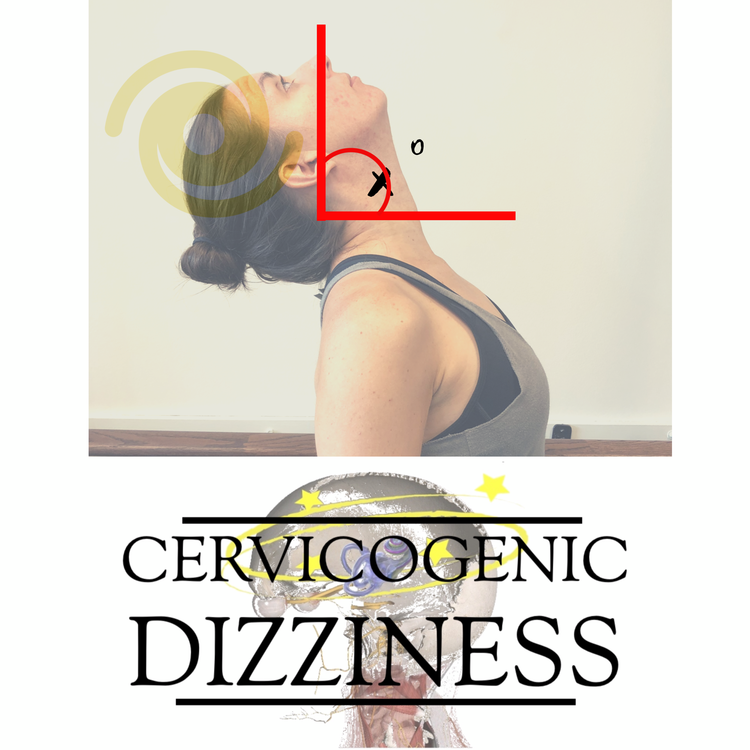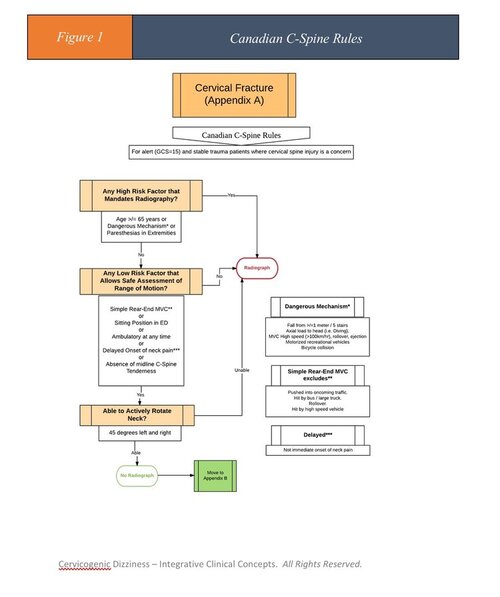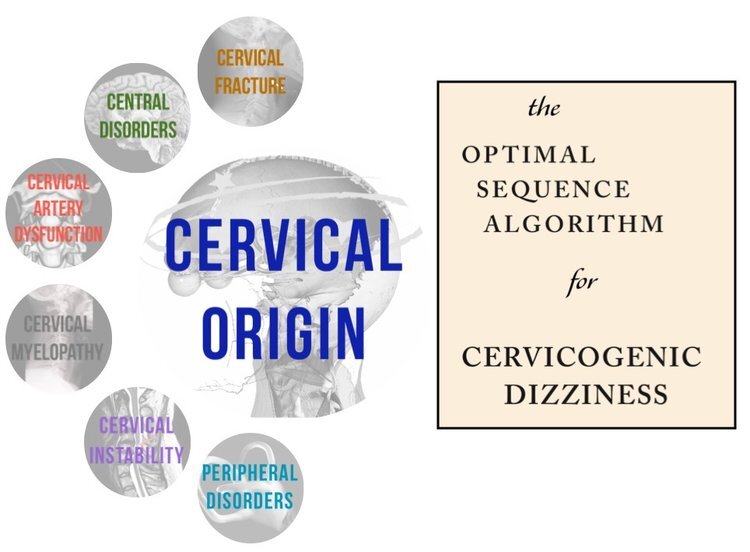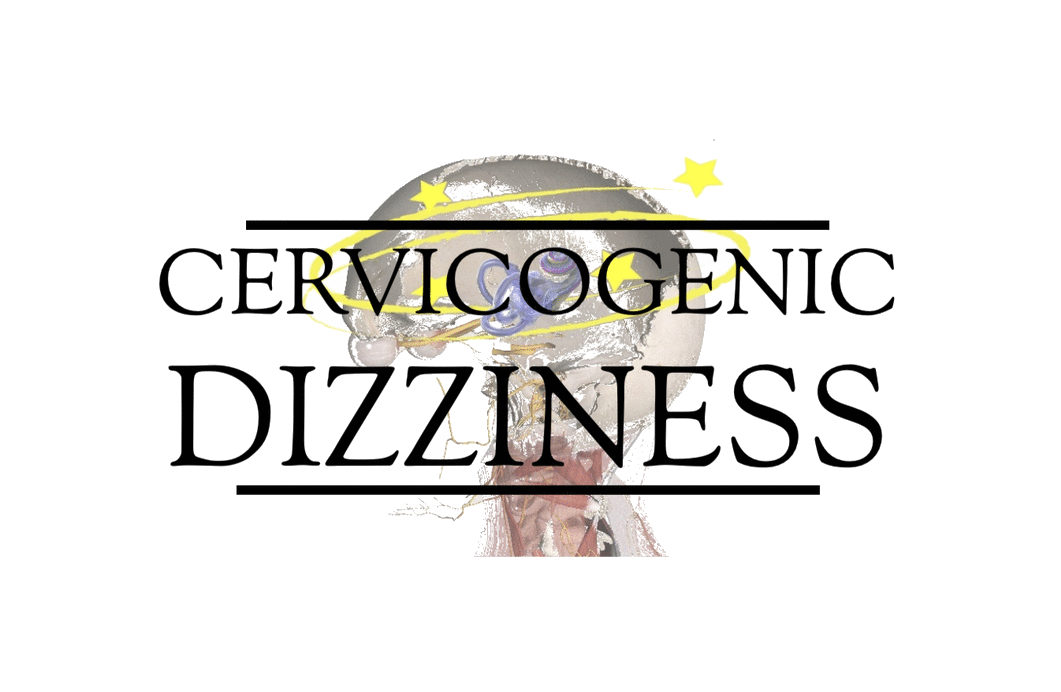
Canadian C-spine Rule. And HOW does this relate to Cervicogenic Dizziness?
The Canadian C-spine Rule is one of the most useful, reliable and valid differential decision making tools in our arsenal. As a very sensitive tool, it is a phenomenal screen for clinicians to rule out a cervical fracture. This is especially important prior to what rehabilitation clinicians do for a living—apply some type of local cervical treatment as it would obviously be an absolute contraindication to treatment.
Even if a PT is unable to fully cite the decision rule, most, if not all are aware of it and its purpose following a low or high trauma. How many of you would treat your MVA and/or concussion patient without having at least plain films performed by a physician? But there is one element that gets overlooked— and that is the ORDER of the various criteria that guide decision making.
As you can see from Figure 1 below, the clinician should NOT ask the patient to actively rotate the neck PRIOR to ruling out high risk factors and THENlow risk factors . There is a top-down approach, which makes the rule THE rule.


But while we talk about ruling out fracture, which is quite easily performed with plain film imaging (and additionally a CT Scan if you get into the emergency literature…); we have to clinically address other major contraindications to intervention—including central disorders, peripheral disorders, vertebral-basilar insufficiency (VBI) and even instability due to ligamentous tears.
These contraindications are MUCH more challenging, more gray but highly important as we are talking about dizziness here!—we don’t have the data points of highly sensitive or specific measures to rule out these conditions but at the same time, we have a very powerful tool to get these patients better, and better quickly. It is certainly a dilemma.

Become more confident at addressing the upper cervical spine. Do your concussion, MVA and BPPV patients a favor. Learn my Optimal Sequence Algorithm for Cervicogenic Dizziness. It takes you through the clinical reasoning, the clinical tests and just as important, the ORDER, of addressing a patient concerned of having dizziness from cervical origin. This is the Canadian C-spine Rule on steroids. Then you can pound out results with the Physio Blend. ALL in a weekend—ALL taught by husband-wife combo who are specialists in manual therapy AND vestibular therapy—BOTH neuro and manual combined—ALL in ONE.
Cervicogenic Dizziness Course
You can learn more about the screening and treatment process of Cervicogenic Dizzinesss through Integrative Clinical Concepts, where the authors (husband–a manual therapist a wife—a vestibular specialist), teach a very unique course combining both the theory and practice of vestibular and manual principles in their 2-day course. Pertinent to this blog post, the 2nd day includes the “Physio Blend”, a multi-faceted physiotherapist approach to the management of Cervicogenic Dizziness, which includes treatments of the articular and non-articular system of manual therapy and the most updated sensorimotor exercise regimen.
If you would like to host a course for your staff (either a vestibular, neuro, sports or ortho clinic), please do not hesitate to contact me at harrisonvaughanpt@gmail.com for more information.
AUTHORS
Harrison N. Vaughan, PT, DPT, OCS, Dip. Osteopracic, FAAOMPT
Instructor: Cervicogenic Dizziness for Integrative Clinical Concepts
Danielle N. Vaughan, PT, DPT, Vestibular Specialist
Instructor: Cervicogenic Dizziness for Integrative Clinical Concepts


